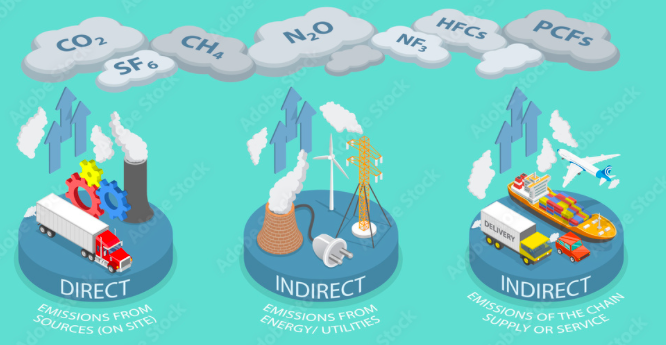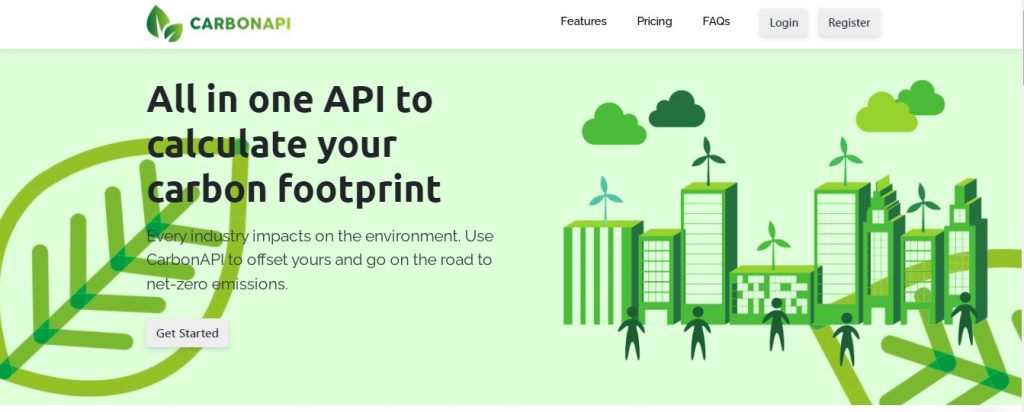Are you trying to become more eco-friendly but need a hand? We will briefly describe what you need to know to calculate your greenhouse gas emissions.
When we talk about greenhouse gases (GHG), we mean CO2 equivalent (CO2 eq), which includes the six GHG listed by the Kyoto Protocol: carbon dioxide (CO2), methane (CH4), nitrogen oxide (N2O), hydrofluorocarbons (HFCs), perfluorocarbons (PFCs), and sulphur hexafluoride (SF6). These gases allow sunlight to travel through the atmosphere, but they prevent the heat that the sun produces from escaping. In general, greenhouse gases are beneficial. Our world would be too cold without them, and life as we know it would cease to exist.
However, there is such a thing as too much of a good thing. Human actions are altering the Earth’s natural greenhouse effect. Emissions from energy consumption in stationary facilities and transportation, fugitive fluorinated gases, municipal waste management, and water consumption in urban networks add to the number of greenhouse gases – particularly carbon dioxide – in the atmosphere, raising the planet’s temperature and contributing to well-known climate change and global warming.

The term “carbon footprint” refers to an organisation’s or individual’s total impact on the climate from emitting greenhouse gases into the atmosphere. To be more precise, a carbon footprint is an estimate of your carbon emissions. They might be direct – originating from sources owned or controlled by the entity that creates the activity – or indirect – resulting from an entity’s operations but occurring at sources owned or controlled by another entity.
Once you gather that information, you can start calculating your GHG emissions. But, don’t worry! You won’t have to sum, multiply or engage in any other mathematical equation. With today’s environmental consciousness, several tools out there can make all the calculus for you. In this article, nevertheless, we will focus on one carbon footprint API to calculate your greenhouse gas impact.
CarbonAPI
If you want to go down the carbon neutrality road, then CarbonAPI‘s carbon footprint calculator API is what you need. The API allows you to submit your carbon footprint data on, among other things, energy usage, package delivery, freight and logistics, and transportation. The software will then organise it and use several algorithms to calculate your carbon footprint in kilogrammes of carbon (CO2 equivalents) in production units per hour, material consumption units per hour, or any other unit you specify in the API. Moreover, the platform will provide you with analytical graphs of your consumption for transparent reporting.
As a result, CarbonAPI is an all-in-one CO2 tracker that is simple to use for monitoring, controlling, and reducing carbon emissions. In other words, it will help you achieve your environmental goals while also encouraging social responsibility. Plus, the cloud infrastructure makes integrating user interfaces a breeze. If you are an entrepreneur, personalise the API integration to match your company’s appearance, feel, and functionality. Discover more regarding endpoints and integration options in the developer documentation.
To wrap up, CarbonAPI offers different billing options for personal and business use, so you can adjust this carbon footprint tool to any entity or application. Yet, a free version is available for anyone looking to try this API out. It enables up to 20 monthly submissions to the carbon footprint calculator, online reporting, and API access.
Did this blog post serve as a practical guide for calculating you GHG emissions? Let us know in the comments!


